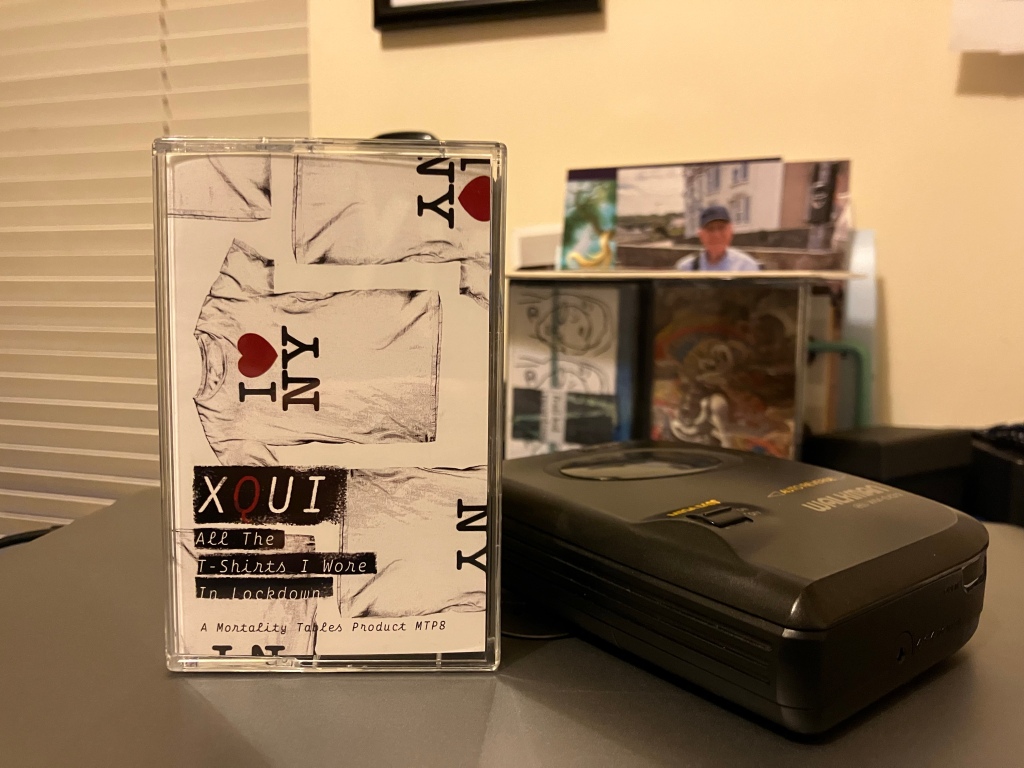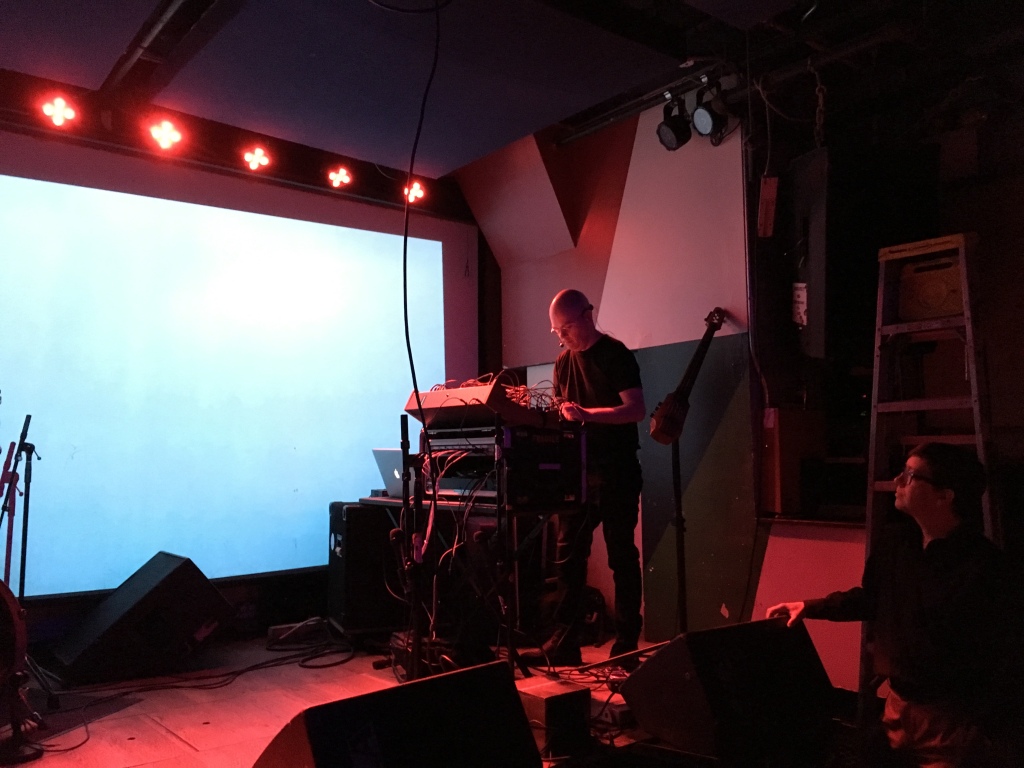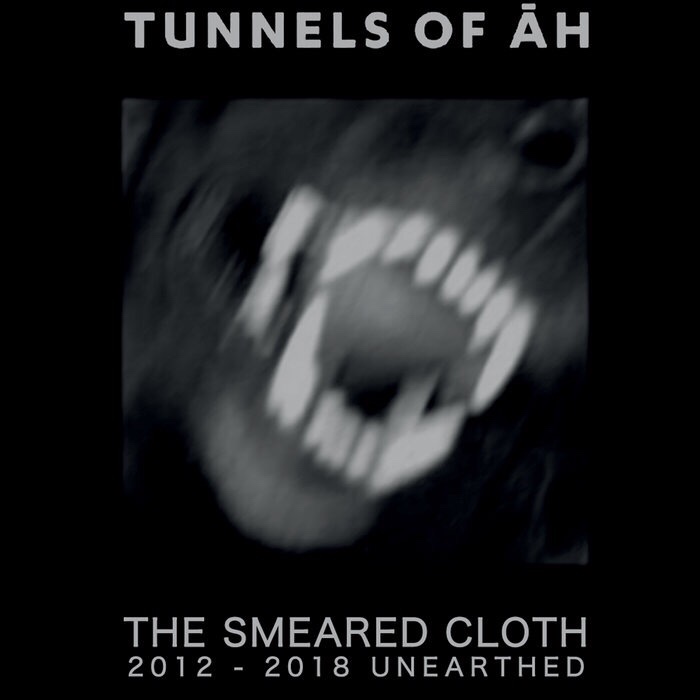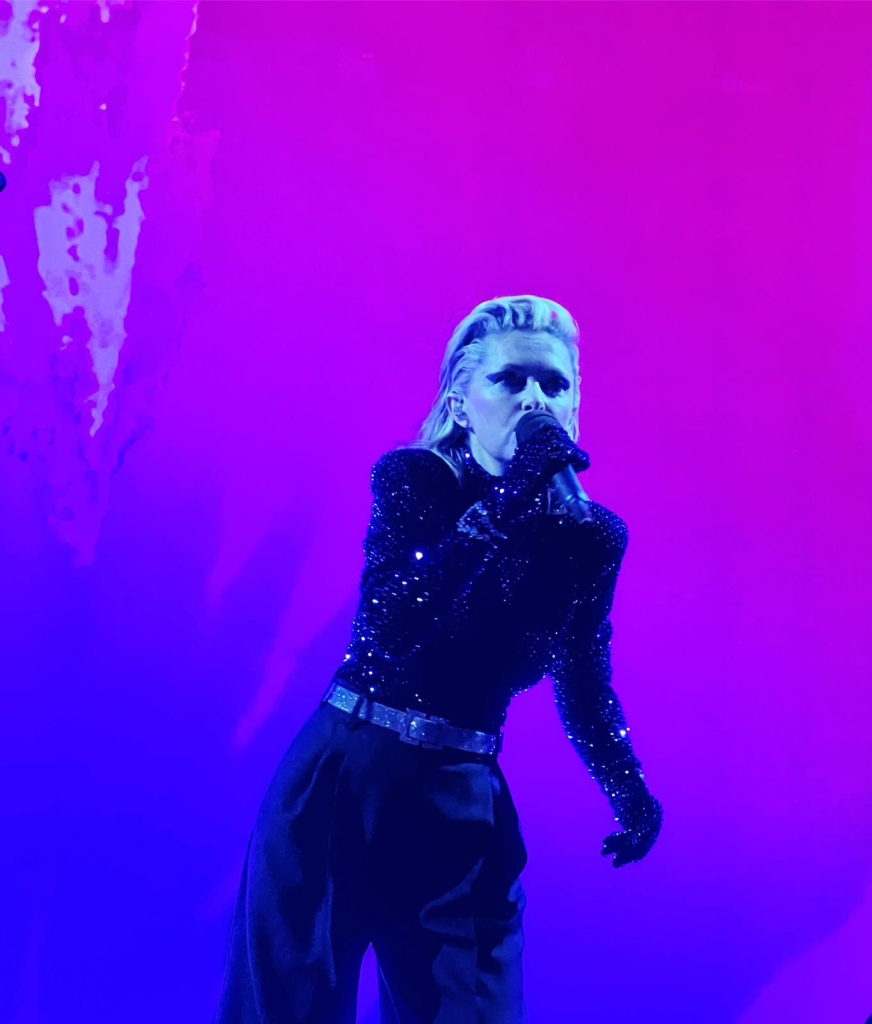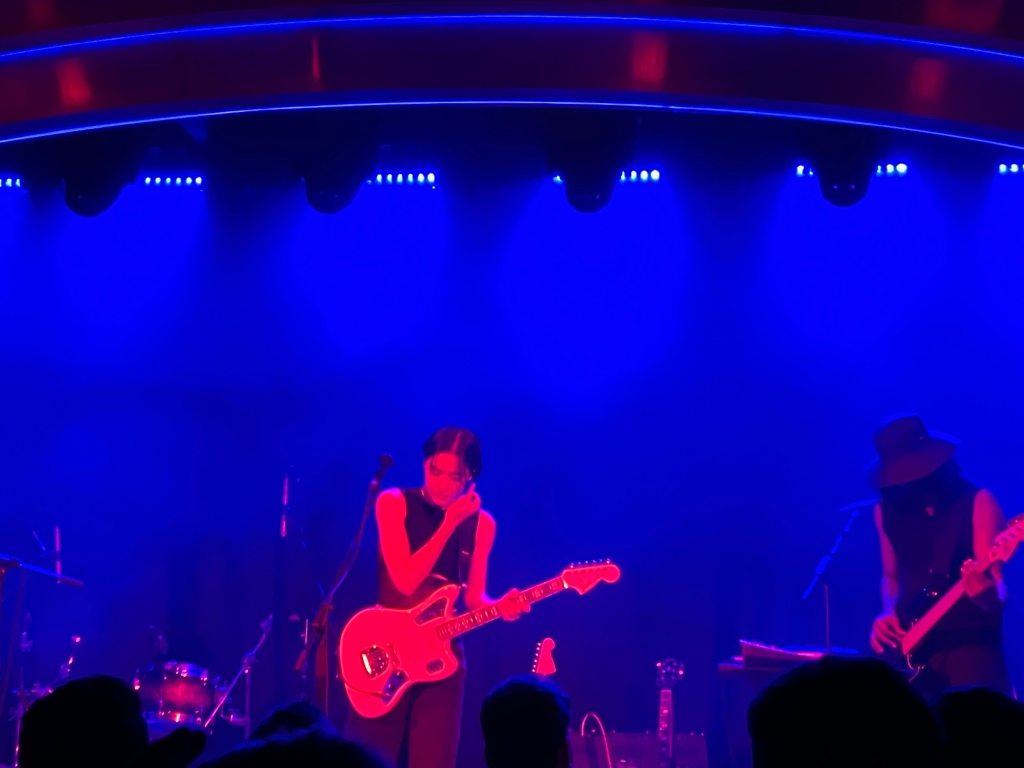It’s that special time of the year where the sounds of well-worn Christmas hits from yesteryear fill playlists and people begin to debate whether ‘Fairytale Of New York’ really is the best Christmas song of all time.
With some help from my good friend and Mute afficionado Jorge Punaro, I here present a trawl through the back catalogues of Mute artists past and present to deliver an alternative compilation of seasonal songs; songs that range from the traditional, the just plain festive and on to the downright tenuous. Jorge has meticulously prepared a Spotify playlist containing everything we could get our hands on (and many more songs than I’ve covered here). For your optimal listening experience, Jorge’s should be listened to while drinking one of the cocktails from Erasure’s Snow Globe box set.
I often think of Erasure at Christmas, mostly because I remember receiving a 7″ of ‘You Surround Me’ in 1989 in my stocking. The year before, Vince Clarke and Andy Bell narrowly missed securing the coveted Christmas number one slot with Crackers International, an EP which led with ‘Stop!’ but also included the moving ‘She Won’t Be Home’ (renamed ‘Lonely Christmas’ on the slightly dubious The Erasure Christmas Gift 7″); elsewhere on the EP, the duo delivered a spooky version of the traditional carol ‘God Rest Ye Merry Gentlemen’ complete with authentic choir-boy vocals from Bell, while two years before the pair did a relatively throwaway take on ‘Silent Night’ for the US Yulesville promo LP (the same year that Clarke’s former Yazoo band mate Alison Moyet had contributed ‘The Coventry Carol’ to the compilation A Very Special Christmas). The limited formats of Erasure’s ‘Am I Right’ EP (1991) featured a festive Me Company design of Christmas trees with a photo of a young boy holding presents, while Andy Bell co-hosted Channel 4’s Camp Christmas in 1993, with musical accompaniment from Vince. Andy also featured in a short film called I Hate Christmas as a market stall worker.
2013 was the year that Erasure went all-out Christmas with the celebrated release of Snow Globe. The album collected a number of classic Christmas songs, including ‘Silent Night’ and ‘God Rest Ye Merry Gentlemen’ in updated splendour, as well as some of Vince and Andy’s own tracks. The limited-edition box – or should I say the obligatory limited-edition box, since if Mute did one thing in 2013 it was to ensure that their avid fans went without their turkey after spending out a small country’s GDP on ever more elaborate and expensive box sets – included a bauble, balloon, a packet of sweets and some Erasure-themed cocktail recipes.
Other artists who’ve covered Christmas songs include Echoboy, who released a special split EP with Six By Seven for a Christmas show in Nottingham in 1999 which included a very alternative version of ‘Silent Night’. Richard Hawley also delivered a very easy listening take on ‘Silent Night’ for a special one-track CD given away to people who attended his show in Sheffield in December 2006; during winter gigs and on radio Hawley has also covered ‘Blue Christmas’, made famous by Elvis Presley, but I haven’t heard a recording of that yet (if anyone feels charitable enough at this time of giving to send me one in the name of research, please get in touch).
In the wake of their 2008 album Seventh Tree, Goldfrapp found time to record a beautifully jaunty version of ‘Winter Wonderland’ for a US Starbucks compilation, while former Blast First act Sonic Youth recorded a sketchy and somewhat unpleasant version of Martin Mull’s ‘Santa Doesn’t Cop Out On Dope’ for a 1996 compilation, which is definitely one for completists only.
For Can completists, the veteran Krautrockers put out an ultra-twee take on ‘Silent Night’ way back in 1976 on Virgin in the UK. The Residents launched their audacious avant-garde music career with Santa Dog in 1972, a double 7″ single mailed out to various people featuring four tracks by various pseudonymous artists, all of whom were actually The Residents themselves (whoever they are). The band have released several other versions of Santa Dog since 1972 – in 1978, 1998, 1992 (‘Show Us Your Ugly’), 1999 (Refused), 2006, 2012 (SD12) and a fiftieth anniversary version in 2022. Way back in 1956, occasional Blast First artist Sun Ra co-opted the alias The Qualities and issued the doo wop 7-inch ‘It’s Christmas Time’. Backed with the sincere blues of ‘Happy New Year To You!’ this curiosity remains one of the most surprisingly accessible pop releases in the expansive Ra catalogue, and proof that they celebrate the holidays on Saturn just like they do here on Ra’s adopted home.
Einstürzende Neubauten stalwart F.M. Einheit and Caspar Brötzmann recorded an album called Merry Christmas which Paul Smith‘s label put out in 1994, but it isn’t at all festive and, besides, it was released in May that year. Still, the album’s sleeve of a hand-drawn tank reminds me of troops putting down arms during World War II, so maybe there’s a connection to the festive season somewhere on this album after all. Mute US duo The Knife recorded a song called ‘Reindeer’ for their eponymous album in 2001; as if the song wasn’t festive enough already with its lyrics about Santa, The Knife issued a version with Christmas bells (renamed ‘Christmas Reindeer’) in 2006 as a free download. In 2023, The Knife’s Karin Dreijer (Fever Ray) released a new album, Radical Romantics, featuring the track ‘North’. Jorge and I like to think she was referring to the North Pole.
Holger Hiller’s eponymous last album for Mute in 2000 included the track ‘Once I Built A Snowman’, while Ben Frost’s 2017 album Music From Fortitude opened with ‘This Is Not Christmas’. Andreas Dorau, he of one-time Mute group Die Doraus Und Die Marinas, has recorded two Christmas songs. ‘Weihnachten Ist Auch Nicht Mehr Das Was Es Mal War’ is a bouncy electropop track that appeared on Staatsakt’s Santo Klaus sampler in 2016, and just over ten years earlier, he released the track ‘Weihnachten Im Wald’ as a limited-edition of 100 CDs for a Carhartt jeans promotion.
The Jon Spencer Blues Explosion‘s 1992 Sub Pop Singles Club 7-inch paired together two excellent tracks – the wild rockabilly gestures of ‘Big Yule Log Boogie’ and the ‘Blue Christmas’-esque ‘My Christmas Wish’. Josh T. Pearson became the first Mute artist to deliver a whole EP of Christmas songs, with his maudlin Rough Trade Bonus disc getting released in 2011 as a Rough Trade shop exclusive accompanying his Mute debut, Last Of The Country Gentlemen. This year, Pearson issued a new song, ‘2020’s Silent Night Hindsight’ straight to YouTube, and a more perfectly cynical take on a shit year you will be hard-pressed to find.
In 2012, Canada’s Ladan Hussein, variously known as Al Spx and later Cold Specks covered Mary Margaret O’Hara’s ‘Christmas Evermore’ for a Christmas compilation, complete with brass and obligatory messages of peace and hope and a bit of Diamanda Galás-esque tremulous wailing. The debut Cold Specks album, I Predict A Beautiful Expulsion (2012) also features the stirring track ‘Winter Solstice’.
Looper‘s 2003 album The Snare features the haunting and evocative ‘New York Snow’, while the ‘Intro’ track on M83‘s Hurry Up, We’re Dreaming has dreamy lyrics about walking in snow. Way back in 1982, Yazoo’s Upstairs At Eric‘s included the sparse ‘Winter Kills’ and an orchestral version of ‘Only You’ was used in a Boots TV ad in 2017. A year before Upstairs At Eric’s, future Mute artists A Certain Ratio recorded the irrepressable long-form funk track ‘Winter Hill’ for their To Each album, while, some twenty years later, Nick Cave & The Bad Seeds released the wintery ‘Fifteen Feet Of Pure White Snow’ in 2001, regrettably the closest the songwriter has yet come to recording a seasonal song. Surely there’s a Christmas album in St. Nick somewhere? Moby‘s never officially done a Christmas track either, though he did remix the late arch-crooner Tony Bennett’s ‘I’m Coming Home For Christmas’ in 2007, but the track was only ever released as a promo.
Maps, known to his parents as James Chapman, kicked off his pre-Mute career as Short Break Operator, including the haunting ‘Some Winter Song’ as the first track on his debut EP from 2003. In fact, of all the Mute roster, Maps is easily the most prolific Christmas-loving artists. He recorded the frosty ‘Sparks In The Snow’ for his second single, went on to cover East 17’s ‘Stay Another Day’ for a promo CDr and released ‘Merry Christmas (My Friend)’ straight to Soundcloud in 2013, which is among the most atmospheric things Chapman has ever recorded.
Later still, 2016 Chapman’s collaboration with former Mute artist Polly Scattergood, On Dead Waves, yielded two Christmas songs in the form of a cover of ‘In The Bleak Midwinter’ and the track ‘Winter’s Child’ that closed the duo’s only album together. In 2022, Polly Scattergood released her own Christmas track, ‘Snowburden’, which followed this year’s career-defining and intensely personal album In This Moment. The new song found the singer somewhere between Laurie Anderson-esque sound art and sensitive balladeering.
In 2020, one of Mute’s longest-serving sons, David Baker – one half of I Start Counting, Fortran 5 and Komputer – released ‘The Lights Of The Pub’, a charity single under his Joanna-tinkling alias Dave The Keys in aid of his local London boozer, The Lamb on Holloway Road. Dave (now working as lonelyklown) unwrapped another Christmas treat in 2022 with the emotive ‘Winter In London’, and this year popped ‘I Believe In Snow’ under your burgeoning Mute Christmas tree.
Speaking of charity, here’s a shameless plug: in 2012, Documentary Evidence compiled MuteResponse, a double download charity compilation album intended as a tribute to Mute’s legacy, and also to rule off the first ten years of writing this very site. On MuteResponse #1, I was able to include one-time Credible Sexy Units act Vic Twenty‘s ‘Christmas In Korea (New Year In Japan)’. Angela ‘Piney Gir’ Penhaligon and Adrian Morris recorded the track years ago but it was never officially released until the MuteResponse compilation. I first heard this track years ago during an interview with Morris, and I always wanted to make sure that others would get to hear it, and so I was delighted to let the song see the light of day. Incidentally, Piney’s done plenty of other Christmas songs, one of my personal favourites being the lovely ‘For The Love Of Others’ in 2009. You can find MuteResponse over at Bandcamp.
So we’ve surveyed the traditional and the festive – what about the tenuous? Look no further than Mute’s most bankable act, Depeche Mode, whose only obvious Christmas connection was Dave Gahan delivering a festive message on the aforementioned Yulesville compilation. However, a year earlier, Depeche’s Alan Wilder and Martin Gore penned the track ‘Christmas Island’ as the B-side to ‘A Question Of Lust’; it isn’t remotely festive, it was released in May that year, it’s named after an island in the Indian Ocean, but it’s got the word Christmas in the title and so, dubious though it is, onto the Dreaming Of A Mute Christmas playlist it goes. Sticking with the theme of tenuousness, former Depeche member Alan Wilder (Recoil) included a track called ‘Freeze’ on 1992’ s Bloodline. And what do you know? Vocals on that track were provided by Moby.
Another member of the extended Mute alumni family, Beth Jeans Houghton (Du Blonde) dropped the misanthropic ‘It’s Christmas And I’m Crying’ in 2023, a track that even Ebenezer Scrooge would find miserable. But hey! Christmas is supposed to be fun, and so here’s a version of The Normal’s ‘Warm Leatherette’ by The Bombshelter Brigade, re-titled ‘Merry Christmas’ and taken from the 1988 compilation Christmas At The Bombshelter.
Happy Christmas to Mute fans everywhere.
Words: Mat Smith
Spotify playlist and Mute Navidad nous: Jorge Punaro
(c) 2023 Documentary Evidence & Jorge Punaro. Earlier versions of this feature were published in 2012, 2013, 2020 and 2022. If we’ve missed anything let us know and we’ll get them added in.




